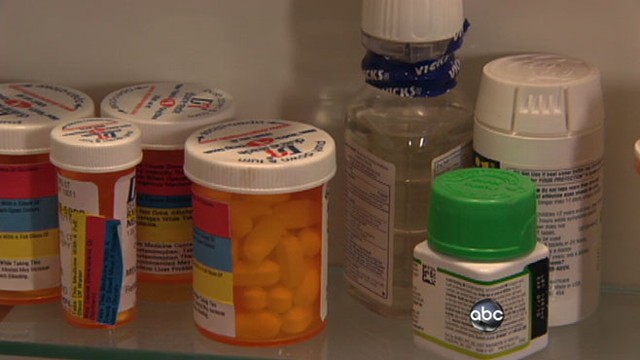
EVEN as a healthy adult, you probably have some medicine in your home, for the occasional headache, allergic reaction, cold sore, or oven burn.
But medication has a shelf life. And how you store it affects its longevity and the safety of your family.
WHERE TO KEEP YOUR MEDICINE
According to Martin et al (2016), heat, air, light, and moisture can damage medicine, making it less effective. With this in mind, AssistGuide Information Services (AGIS; 2017) says that the bathroom and/or kitchen is not ideal for medicine storage due to temperature and moisture fluctuations.
Martin et al (2016) suggest storing your medicine in a dedicated container, in a cool and dry place, like a bedroom cupboard.
AGIS (2017) adds that you should keep medicines:
* together, so they’re easy to find in an emergency
* stored in a location with good lighting, so you can read the labels clearly
* in their original containers.
In original containers, it’s easier to track dosage instructions, active ingredients, expiry dates, etc., and the colour and material of the bottle may protect the contents from light (National Council on Patient Information and Education, 2008). You should also make a point of keeping the package inserts of all medications.
PROTECTING OTHERS IN YOUR HOME
According to Up and Away and Out of Sight (2017), more than 60,000 children in the USA go to the emergency room annually because they get their hands on medicine.
While convenient access is important in an emergency, there’s a potential risk to pets and children if you keep medicines at counter-level or lower, and in cupboards or containers that are easy – or maybe fun – to open.
Up and Away and Out of Sight (2017) recommends, as its name suggests, that you keep medicines ‘up, away and out of sight’.
According a study by Safe Kids Worldwide (2017), there’s a disconnect between what parents perceive as safe medicine storage and what is actually safe in the real world.
For instance:
* Out of reach: Although 60 percent of parents think a medicine is safe when out of reach (like on a counter top), research shows that in about 50 percent of poisonings, children have climbed onto a surface to reach the substance.
* Supervision: A third of parents believe that supervising their children is enough to protect them from accessible medicines, but parents of poisoned children often say that they’d looked away for only a minute.
* Packaging: Half of parents think that child-resistant packaging is enough to protect a child from potentially dangerous medicine, but studies show that half of accidental poisonings involved child-resistant packaging.
And there’s another risk inherent in storing medication incorrectly: adult family members may take the wrong medicine accidentally.
That’s why the National Council on Patient Information and Education (2008) says you should keep each family member’s medication in their own unique location (like a shelf in the cupboard), and Purdue Pharma (2015) insists on never sharing prescription medicine.
MEDICINE STORAGE WHILE TRAVELLING
If you have kids, or take regular medication, you’ll probably take a few medicine or first-aid supplies with you when you travel.
If driving, Martin et al (2016) recommend not storing medicine in the cubby-hole, as this area can get too hot. In an aeroplane, keep medication in the original bottles in your carry-on luggage, along with a copy of all your prescriptions and a doctor’s note that lists your needs in case the airline, security or customs request it.
DISPOSING OF UNUSED MEDICINE
Safe medicine storage is also about purging unsafe stock that’s expired or damaged. Monitor your medicine supply and discard any substances that have expired or changed colour, texture, or smell. Be aware that pills that stick together or appear to have changed physically may not be completely safe for you to use.

When throwing medicine away, follow the disposal instructions on the packaging.
If there aren’t any, Martin et al (2016) advise that you not throw it down the drain or toilet as, in most cases, this pollutes the water supply. Instead, take it to your pharmacist or, say Martin et al (2016), mix the leftovers with a substance that ruins it (like cat litter) before sealing it in a plastic bag and throwing it away.
Source :-SOuth Coast Herald

Leave a Reply